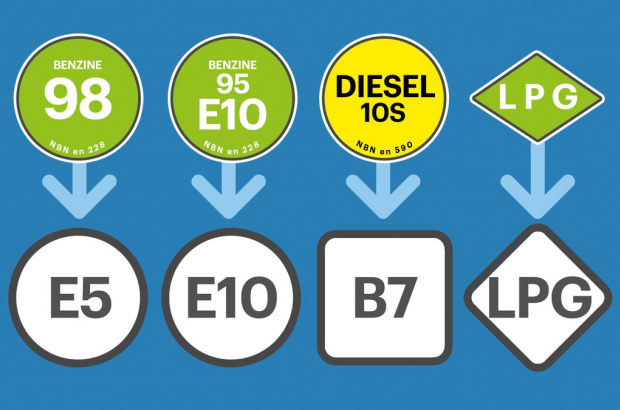- Daily & Weekly newsletters
- Buy & download The Bulletin
- Comment on our articles
Petrol 98 and 95 labels to change next week
Starting on 12 October, petrol stations in Belgium will have different designations for 95 and 98 petrol as well as diesel. The petrol designated 95 will be called E10, while super 98 will be called E5. Diesel will be called B7. It is expected that stickers will sport both the old and new designations to make the transition easier for consumers.
The change is due to the decision to make the system uniform across EU countries. So whether you’re in Belgium, Spain, Sweden or Romania, the petrol will all carry the same codes. Some other non-EU members will also carry the codes, including Switzerland, Norway and Turkey.
“The idea is to improve consumer awareness everywhere in Europe with the same stickers,” Chantal De Pauw of the federal economic department told VRT. “Now there is too much confusion.”
The colour of the stickers on the pumps will change as well, from the current green (petrol) and yellow (diesel) to a uniform black-and-white. The shapes of the stickers, however, will vary: round for petrol, square for diesel and a diamond shape for other kinds of fuels, like LPG.
The designation LPG will, by the way, not change. The designations are based on the percentage of bio-ethanol in the petrol, while B7 means 7% biodiesel.
“It is definitely an adjustment,” said De Pauw. “But there is a transition period where both names will be on the pump. There is also an awareness campaign to let people know.” And in fact garage operators can keep the old name alongside the new for as long as they want.
Roadside assistance firm VAB has stated that the change is a good thing as it standardises the system across Europe. But it fears confusion at the pumps, especially as the ‘B’ on diesel is the first letter in benzine, the Dutch word for petrol.
“That would lead a diesel user to thing ‘oh, the B stands for benzine, I can’t use that,” said Maarten Matienko of VAB. “Then the driver uses the other pump – petrol. That’s technically possible because the nozzle of a petrol pump fits in a diesel tank. The opposite is not the case.”
Matienko points out a further phenomenon that would make things more confusing for diesel buyers: “Today, petrol is a few cents cheaper than diesel, which is usually the other way around. So the diesel user reaches for the cheapest pump.”
VAB would like to see stickers also placed on the nozzles as an additional warning to consumers. “Because if a diesel tank gets petrol, that can cause a lot of damage to the engine.”

















